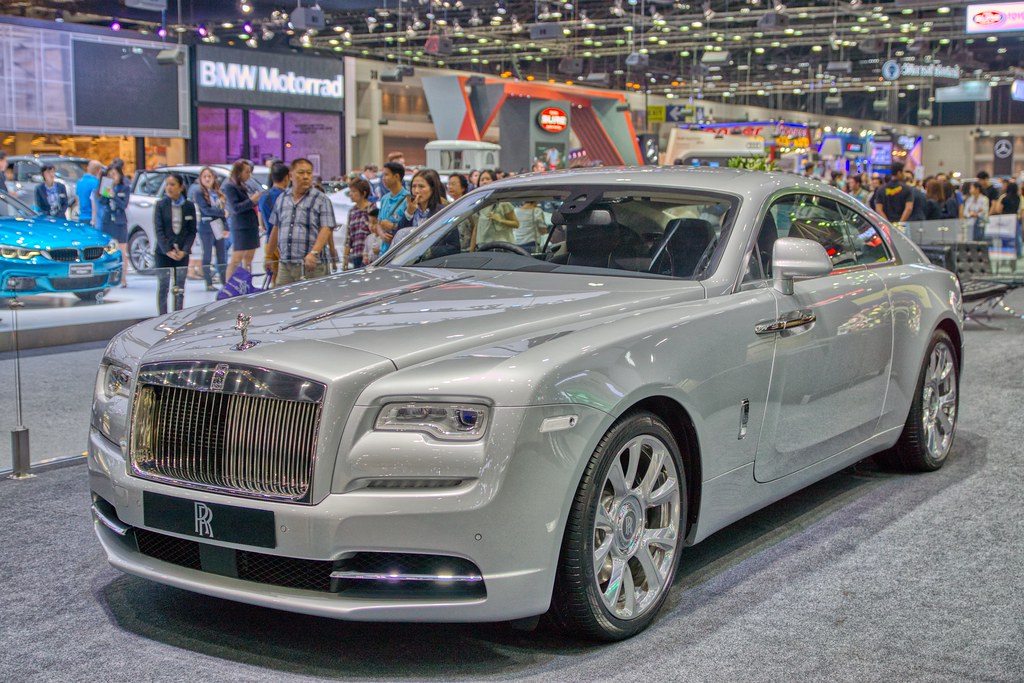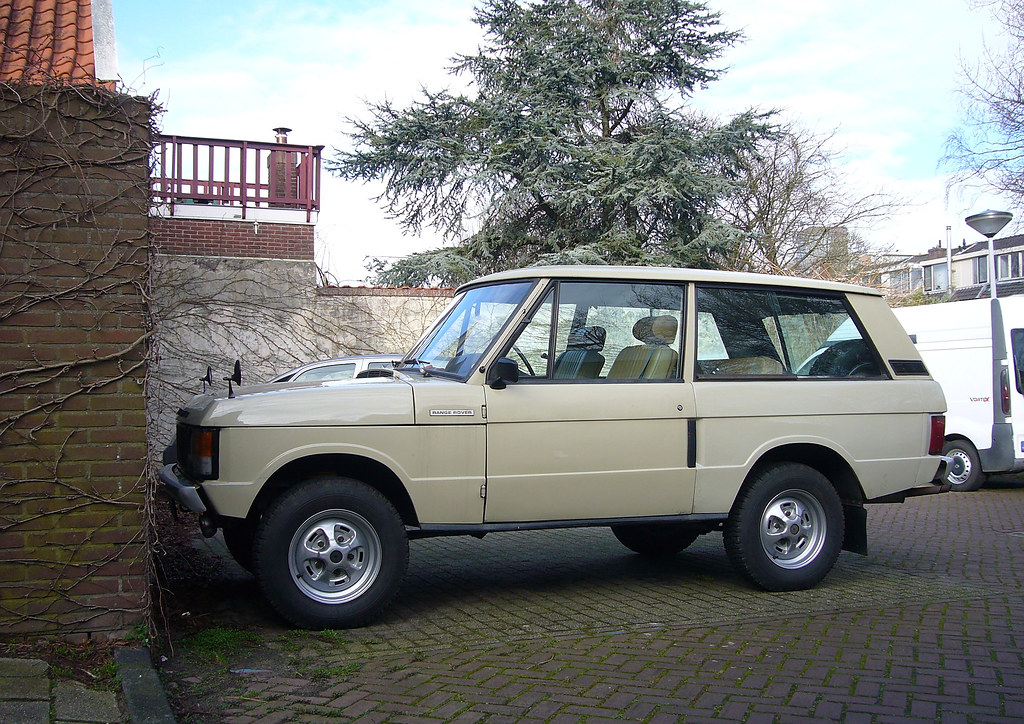
American pickup truck buyers are navigating a significant shift in the automotive landscape, grappling with tightening emissions requirements and the accelerating push towards electrification. This transition has proven particularly challenging for manufacturers who have historically relied on powerful, large-displacement engines to define their brands and satisfy a deeply loyal customer base. The V8 engine, for decades the heart of American truck performance and identity, is increasingly finding itself on the chopping block, leading to both innovation and considerable customer apprehension.
Indeed, the prognosticators and industry analysts have been predicting the end of the V8 engine for half a century, since at least the first fuel crisis in 1973. Factors like fuel economy and emissions have continuously mounted pressure. Yet, for the last 50 years, the V8 has managed to survive. However, as manufacturers are compelled to pivot towards turbocharged four-cylinder and six-cylinder engines, or even entirely electric powertrains, the question looms larger than ever: will the V8 finally sing its swan song and vanish entirely from the automotive scene?
This shift isn’t just about technical specifications; it’s about heritage, performance, and a deeply ingrained cultural association. Americans, particularly truck owners, have long associated robust performance with V8 engines. The rumble, the torque, the sheer brawn of a V8 under the hood has been a source of pride and confidence. As we delve into the stories of V8 engines that have either disappeared or faced significant threats, we uncover a fascinating narrative of engineering evolution, market forces, and the enduring power of brand loyalty.
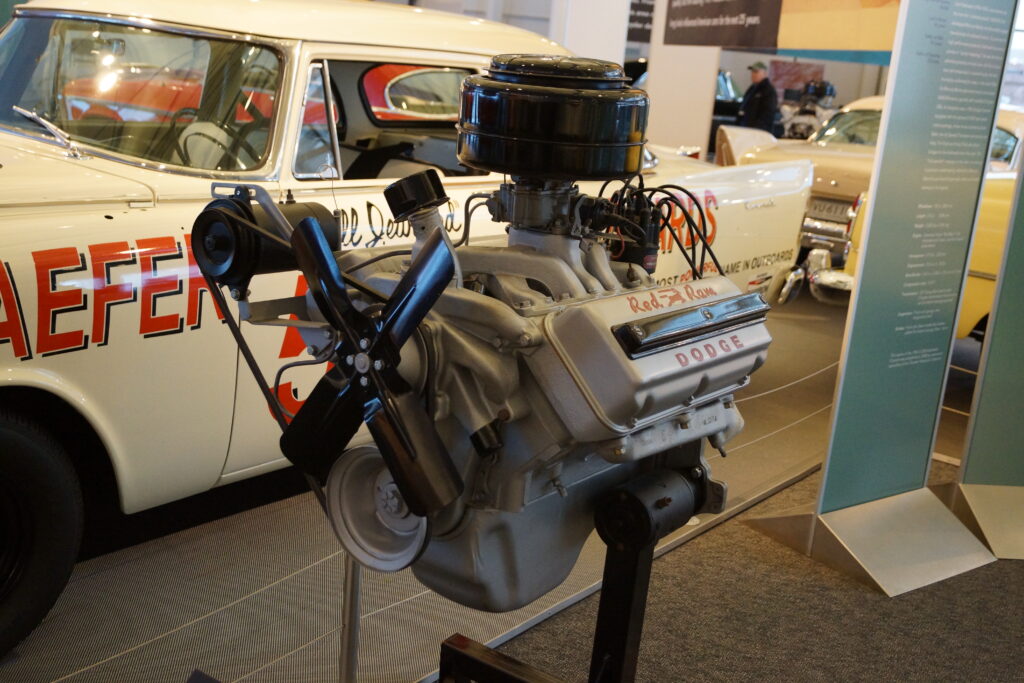
1. **The Ram Hemi V-8’s Initial Disappearance and Fan Revolt**Stellantis, the parent company overseeing iconic brands like Ram Trucks, Jeep, and Dodge, found itself in a challenging position when it briefly removed its highly popular gas-powered Hemi V-8 engine from a significant portion of its lineup. This decision impacted vehicles that were mainstays for performance enthusiasts and truck buyers alike, including the Dodge Challenger, Charger, and the immensely popular Ram 1500 half-ton pickup. The reaction from the dedicated customer base was immediate and fiercely negative.
Ram fans, known for their strong loyalty to the brand and its performance offerings, revolted against the move. The Hemi name itself carries a certain legendary status and reputation among Ram owners that newer, more efficient engines, despite their technical merits, simply could not replicate. As company veteran Tim Kuniskis, who was rehired by CEO Antonio Filosa to run Ram and oversee all North American brands including SRT, succinctly put it, “Everybody, even if you don’t know what Hemi is, you know, the term. ‘Oh, it’s got a Hemi.’” This highlights the engine’s almost mythological status.
The strategic misstep had tangible consequences for the brand. Ram Truck sales had notably dropped every quarter since the company switched the engine in the 1500 to an inline-six-cylinder known as the Hurricane. According to Kuniskis, dropping the Hemi would cost Ram at least 30,000 truck sales annually. In a segment where customer loyalty runs incredibly high—between 75% to 80%—losing any of these devoted customers is a critical blow that affects long-term market share and brand health. The initial removal underscored the deep emotional connection buyers have with the V8.
The decision to pursue a “greener” strategy, involving smaller engines and substantial investment in electric vehicles, gained significant momentum after the Euro-American Fiat-Chrysler merged with France’s Groupe PSA in 2019, forming Stellantis under CEO Carlos Tavares. While driven by legitimate environmental and regulatory pressures, these changes inadvertently alienated a vocal segment of the American automotive enthusiast community. Many felt that their preferences were being disregarded, a sentiment expressed by Mike Gresham of Central Texas Mopars: “The wrong people were trying to guide America, American enthusiasts, in a direction they did not want to go and still don’t want to go.” This resistance ultimately forced Stellantis to reconsider its powertrain strategy for the Ram 1500, a narrative we will revisit later.
Car Model Information: 2018 RAM 1500 Express
Name: Dodge Ram / Ram pickup
Caption: 2017 Ram 1500 Express
Manufacturer: Dodge
ModelYears: 1981–present
Production: October 1980 – present
Class: Pickup truck#Full-size pickup truck,Pickup truck#Heavy-duty pickup truck
Layout: Front-engine, rear-wheel-drive layout,rear-wheel drive
Predecessor: Dodge D series
Categories: 1990s cars, 2000s cars, 2010s cars, 2020s cars, All-wheel-drive vehicles
Summary: The Ram pickup (marketed as the Dodge Ram until 2010 when Ram Trucks was spun-off from Dodge) is a full-size pickup truck manufactured by Stellantis North America (formerly Chrysler Group LLC and FCA US LLC) and marketed from 2010 onwards under the Ram Trucks brand. The current fifth-generation Ram debuted at the 2018 North American International Auto Show in Detroit, Michigan, in January of that year.
Previously, Ram was part of the Dodge line of light trucks. The Ram name was introduced in October 1980 for model year 1981, when the Dodge D series pickup trucks and B series vans were rebranded, though the company had used a ram’s-head hood ornament on some trucks as early as 1933.
Ram trucks have been named Motor Trend magazine’s Truck of the Year eight times; the second-generation Ram won the award in 1994, the third-generation Ram heavy-duty won the award in 2003, the fourth-generation Ram Heavy Duty won in 2010 and the fourth-generation Ram 1500 won in 2013 and 2014, and the current fifth-generation Ram pickup became the first truck in history to win the award four times, winning in 2019, 2020, 2021 and most recently, 2025.
Get more information about: Ram pickup
Buying a high-performing used car >>>
Brand: Ram Model: 1500
Price: $15,899 Mileage: 114,235 mi.

2. **Toyota’s 5.7L V8 — The Tundra’s Shift to V6 Turbo**Toyota, a brand with a strong reputation for reliability and utility in its truck offerings, made a notable decision for the 2022 model year: it chose to cut the V8 from the engine lineup of its full-size Tundra pickup. This move came despite the Tundra’s enduring appeal, with newer models often ranking among the best years for the truck. While no official reason was publicly announced for dropping the 5.7L V8, the strategic rationale becomes clear when examining the capabilities of its replacement.
The Tundra’s new powertrain centers around a twin-turbo 3.4L V6 engine, especially the formidable hybrid MAX version. This new configuration was designed to offer significant advantages over the outgoing V8. On paper, and in real-world performance, the V6 alternative not only produces more power but also benefits from being lighter and delivering superior fuel economy ratings. These are compelling reasons for any automaker to transition away from a traditional V8 in an era of stringent efficiency targets and consumer demand for advanced technology.
Let’s compare the numbers that drove this change. The beloved old 5.7L V8 engine in the 2021 Tundra produced 381 horsepower at 5,600 rpm and 401 lb-ft of torque at 3,600 rpm. In stark contrast, the 2024 Toyota Tundra’s base twin-turbocharged 3.4L V6 already offers 358 horsepower at 5,200 rpm and a more impressive 406 lb-ft of torque at a much lower 2,000 rpm — exceeding the V8’s torque output at a lower engine speed. The next-level V6 variant further boosts output to 389 horsepower at 5,200 rpm and 479 lb-ft of torque at 2,400 rpm.
At the pinnacle of the Tundra’s new powertrain options is the hybrid MAX V6, which truly showcases the potential of modern engine technology. This electrified V6 delivers a remarkable 437 horsepower at 5,200 rpm and an astonishing 583 lb-ft of torque at just 2400 rpm. This significant power increase, combined with a lighter engine package, directly translates to enhanced utility for truck owners. The 2021 V8 Tundra peaked at 1,730 pounds of payload and 10,200 pounds of towing capacity. For the 2024 Tundra, Toyota advertises maximum payload and towing capacities at 1,940 pounds and 12,000 pounds, respectively, clearly demonstrating the V6’s superior hauling prowess.
Beyond performance, the fuel economy improvements are substantial. The EPA rates the V6-hybrid MAX Tundra at a combined 22 mpg, while the standard V6 powertrains achieve 18 mpg in the city and 23 mpg on the highway. These figures represent a significant upgrade over the 2021 V8 Tundra’s estimates of 13-mpg city, 17-mpg highway, and 15-mpg combined ratings. For Toyota, the decision to drop the V8 was a calculated move driven by advancements that offered customers more power, better efficiency, and greater capability, all while meeting stricter emissions standards.
Car Model Information: 2024 Toyota Tundra Limited
Name: Toyota Tundra
Manufacturer: Toyota
Production: May 1999 – present
ModelYears: 2000–present
Assembly: San Antonio,Texas
Class: Pickup truck#Full-size pickup truck
Layout: unbulleted list
Related: Toyota Sequoia
Predecessor: Toyota T100
Caption: 2022 Toyota Tundra Limited
Categories: 2000s cars, 2010s cars, 2020s cars, All-wheel-drive vehicles, All Wikipedia articles written in American English
Summary: The Toyota Tundra is a full-size pickup truck manufactured in the United States by the Japanese manufacturer Toyota since May 1999. The Tundra was the second full-size pickup to be built by a Japanese manufacturer (the first was the Toyota T100), but the Tundra was the first full-size pickup from a Japanese manufacturer to be built in North America. The Tundra was nominated for the North American Truck of the Year award and was Motor Trend magazine’s Truck of the Year in 2000 and 2008. Initially built in a new Toyota plant in Princeton, Indiana, production was consolidated in 2008 to Toyota’s San Antonio, Texas, factory.
Get more information about: Toyota Tundra
Buying a high-performing used car >>>
Brand: Toyota Model: Tundra
Price: $50,963 Mileage: 29,512 mi.
Read more about: Rating 10 Full-Size Trucks Proved to Last Beyond 320,000 Kilometers
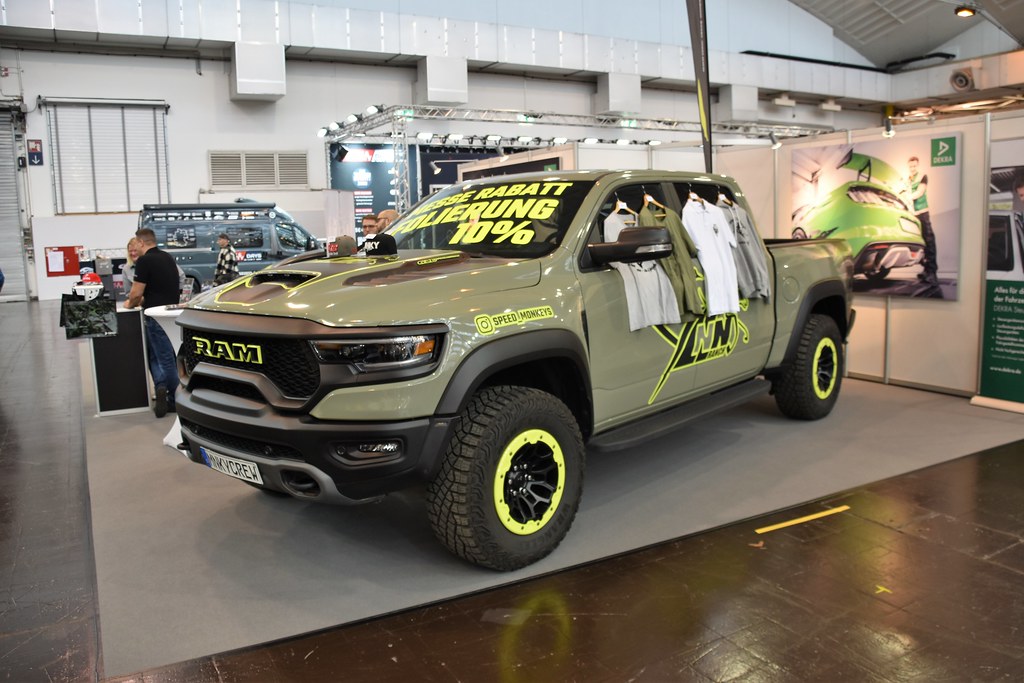
3. **Ram’s Supercharged 6.7L V8 — The TRX’s Powerful Demise**While the 5.7-liter Hemi V8 faced its own period of uncertainty, another extremely powerful Ram V8 engine has officially gone out to pasture: the supercharged 6.7-liter V8. This powerhouse of an engine was specifically designed for, and exclusively used in, the beefy Ram 1500 TRX model. Its discontinuation marks the end of an era for one of the most extreme performance trucks ever produced, leaving a significant void in the high-performance pickup segment.
The supercharged 6.7-liter V8 was nothing short of a marvel, delivering an astounding 702 horsepower and 650 lb-ft of torque. These figures made the Ram 1500 TRX a formidable competitor, offering unparalleled speed and off-road capability that truly set it apart. It was a truck built for enthusiasts who craved raw, unadulterated power and an aggressive driving experience that few other vehicles could match. The discontinuation of this engine is a clear indicator of the broader industry trend away from such large-displacement, high-output V8s, even in niche performance vehicles.
For the 2025 model year, the Ram 1500 is replacing its older V8 options, including the supercharged TRX engine, with the new Hurricane engine. This twin-turbocharged inline-six gasoline engine comes in two output levels. The Standard Output variant provides 420 hp and 469 lb-ft of torque, while the High Output option elevates performance to 540 hp and 521 lb-ft of torque. While these Hurricane engines are undeniably potent and technologically advanced, they represent a fundamental shift in powertrain philosophy from the brute force of the supercharged V8 that defined the TRX.
While the Hurricane engines offer impressive performance on paper and promise to deliver a refined driving experience, they inherit a legacy of power that the supercharged V8 established. The “Mad Max” quote “She’s the last of the V8s. You can shut the gate on this one, Maxie, it’s the duck’s guts” resonates deeply with the departure of engines like the TRX’s supercharged V8. It highlights a growing sense among enthusiasts that an irreplaceable form of automotive power is slowly fading, even as modern alternatives offer their own compelling advantages. The supercharged 6.7-liter V8, with its immense power and association with the TRX, remains a benchmark for what a V8 truck engine can achieve, a standard that future powertrains will inevitably be measured against.
Car Model Information: 2024 Nissan Altima 2.5 SV
Caption: 2021 Ram 1500 TRX
Name: Ram 1500 TRX
Aka: Ram Rebel TRX (prototype)
Manufacturer: Ram Trucks
Production: December 2020 – February 2024
ModelYears: unbulleted list
Assembly: Sterling Heights, Michigan
Layout: Front-engine, four-wheel-drive layout
BodyStyle: crew cab
Related: Unbulleted list
Engine: Unbulleted list
Transmission: ZF Friedrichshafen,ZF 8HP transmission#8HP95,Automatic transmission
Wheelbase: cvt
Length: cvt
Width: cvt
Height: cvt
Weight: cvt
Designer: Mike Gilliam
Categories: 2020s cars, All-wheel-drive vehicles, All Wikipedia articles in need of updating, Articles with short description, Cars introduced in 2020
Summary: The Ram 1500 TRX is a high-performance variant of the fifth-generation Ram 1500 (DT) pickup truck produced by the Ram Trucks division of Stellantis. The TRX name was based on the Ram Rebel TRX concept that was shown at the 2016 State Fair of Texas as an engineering, design and consumer-interest study. Following consumer feedback, the company announced on June 1, 2018, that it would place the truck into production for the 2021 model year. The truck was produced during the 2021 through 2024 model years. The TRX was dropped after the 2024 model year because it cannot be modified to meet tougher automotive emissions standards, and the company’s shift towards electrification. The last special edition TRX was the Ram 1500 TRX Final Edition. The last Ram 1500 TRX was produced on February 16th 2024. A similar truck, the Ram 1500 RHO was introduced, but it is not a direct successor to the TRX. The model year was cut short because of RAM launching 2025 trucks 7 months earlier than their usual model year release date. However, in late July 2025, Stellantis CEO Antonio Filosa has officially confirmed that the TRX will be returning for the 2026 model year.
The TRX competed with Ford Raptor family of high-performance pickup trucks.
Get more information about: Ram 1500 TRX
Buying a high-performing used car >>>
Brand: Ram Model: 1500 TRX
Price: $19,695 Mileage: 49,175 mi.

4. **The Historical Significance of the Ford Flathead V8**The story of the V8 engine in American automobiles is deeply intertwined with Ford’s pioneering spirit. While V8 engines had existed in various forms since the early 1900s, it was Ford that truly democratized this powerful engine configuration, making it accessible to the masses. The introduction of the Ford Flathead V8 was a watershed moment, fundamentally altering the landscape of automotive production and performance for everyday drivers.
Launched in 1932, the Flathead V8 made its way into low-cost vehicles from Ford, establishing a new standard for performance and smoothness in affordable cars. Prior to its debut, eight-cylinder engines were largely the domain of premium auto manufacturers and aircraft builders who could accommodate their size and complexity. The Flathead V8’s efficient packaging and robust design allowed Ford to offer the benefits of V8 power — smooth, quiet operation and excellent power — to a much broader market, a revolutionary concept at the time.
The Flathead V8’s production run, which lasted from 1932 to 1954, solidified its place as a legendary engine. It was simple, durable, and became a favorite among hot rodders and enthusiasts, further cementing its cultural impact. This engine demonstrated that a V8 didn’t have to be exclusive or prohibitively expensive; it could be a reliable, mass-market workhorse. Its success set a precedent, illustrating that consumers desired more power and refinement than inline-fours or even inline-sixes could consistently offer at the time.
The Flathead V8’s influence extended beyond Ford, challenging other manufacturers to develop their own V8 engines for the mass market. Its legacy is a testament to the enduring appeal of the V8 configuration, proving that once drivers experienced the superior power delivery and refinement, it became a highly sought-after characteristic. Its disappearance from new vehicles marked a natural evolution as more advanced V8 designs emerged, but its historical significance as the first V8 for a mass-market automobile remains undisputed.
Car Model Information: 2024 Kia Sorento S
Name: Ford flathead V8
Caption: Ford flathead V8 in a 1942 Ford Super Deluxe
Aka: Ford L-head V8
Manufacturer: Ford Motor Company
Production: ubl
Successor: ubl
Configuration: Side-valve engine,V8 engine
Categories: All articles that may contain original research, All articles with unsourced statements, All pages needing cleanup, Articles needing cleanup from February 2019, Articles that may contain original research from February 2019
Summary: The Ford flathead V8 (often called simply the Ford flathead or flathead Ford) is a V8 engine with a flat cylinder head introduced by the Ford Motor Company in 1932 and built by Ford through 1953. During the engine’s first decade of production, when overhead-valve engines were used by only a small minority of makes, it was usually known simply as the Ford V‑8, and the first car model in which it was installed, the Model 18, was (and still is) often called simply the “Ford V-8” after its new engine.
An automotive milestone as the first affordable V8, it ranks as one of the company’s most important developments. The engine was intended to be used for big passenger cars and trucks; it was installed in such (with minor, incremental changes) until 1953, making the engine’s 21-year production run for the U.S. consumer market longer than the 19-year run of the Ford Model T engine. It was also built independently by Ford licensees..
The Ford flathead V8 was named on Ward’s list of the 10 best engines of the 20th century. It was a staple of hot rodders in the 1950s, and it remains famous in the classic car hobbies even today, despite the huge variety of other popular V8s that followed.
Get more information about: Ford flathead V8 engine
Buying a high-performing used car >>>
Brand: Ford Model: Flathead V8
Price: $24,005 Mileage: 35,296 mi.
Read more about: Timeless Engineering, Iconic Style: Unpacking the Most Significant Cars of the 1940s
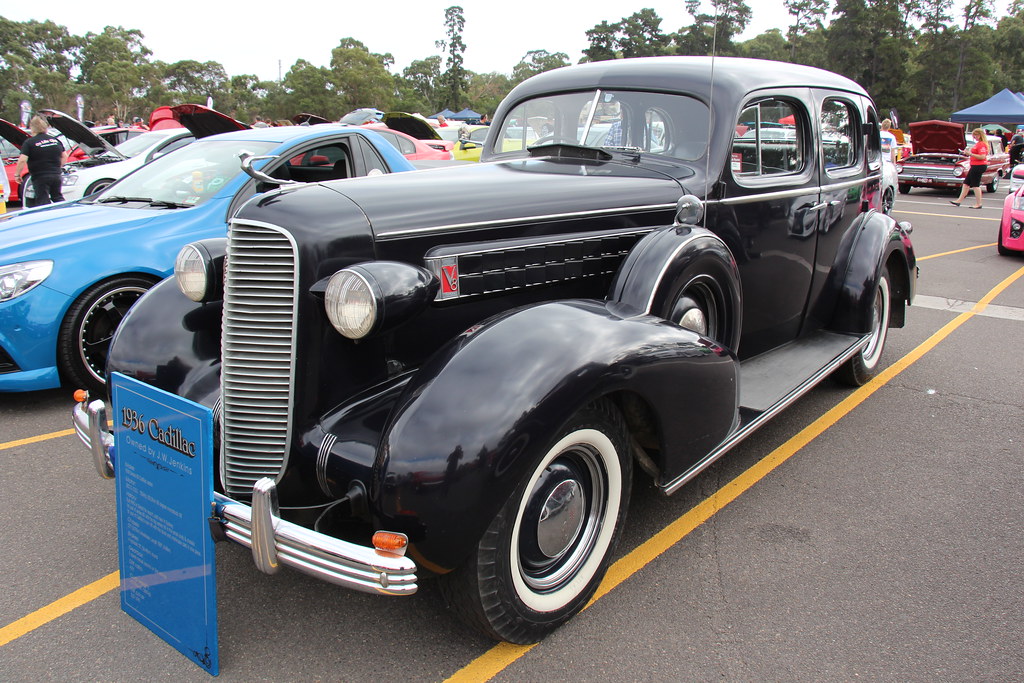
5. **Cadillac’s Pioneer V8 — Mass Production Begins**While Ford democratized the V8 with its Flathead, the very concept of a mass-produced V8 for road-going vehicles began even earlier, courtesy of Cadillac. Though the first V8 engine was a racing engine from France’s Antoinette in 1904, and a few Rolls-Royce cars followed, it was Cadillac that truly brought the V8 to a broader scale of production in the American market. This pioneering effort laid critical groundwork for the V8’s eventual dominance.
In 1914, Cadillac introduced what would become the first mass-produced V8 engine for automobiles. This achievement was significantly aided by Charles Kettering’s development of the electric starter. The electric starter was a pivotal innovation, as manual cranking of a large-displacement V8 engine would have been an arduous, if not impossible, task for most drivers. Kettering’s invention made the V8 practical for everyday use, transforming it from a niche, high-performance curiosity into a viable option for upscale vehicles.
Cadillac’s V8 provided a level of refinement and power that was revolutionary for its time. Its design set a benchmark for other luxury and performance manufacturers. While not immediately accessible to everyone, its availability in mass-produced vehicles signaled a future where smooth, powerful eight-cylinder engines would become a hallmark of American automotive engineering. This early adoption by Cadillac showcased the potential for the V8 to deliver a premium driving experience, distinguishing their vehicles in a competitive market.
This early commitment to the V8 by a prestigious American brand like Cadillac helped establish the engine’s reputation for quality and performance. It paved the way for other companies to explore and eventually embrace the V8 configuration, from luxury cars to, eventually, mass-market trucks and sedans. The groundwork laid by Cadillac’s 1914 V8 was a crucial step in the long and storied history of this iconic engine, influencing generations of automotive design and engineering.
Car Model Information: 2024 Kia Sorento S
Name: V8 engine
Aka: Type 51, Monobloc, LaSalle, Northstar, Blackwing
Caption: A 331 series V8 from the 1950s
Manufacturer: Cadillac (automobile)
Production: 1914–present
Configuration: V8 engine
Valvetrain: Sidevalve,Overhead valve engine,DOHC
Block: Cast iron,Aluminium
Head: Cast iron,Aluminium
Fueltype: Gasoline
Fuelsystem: Rochester Products Division,Bendix Corporation,Throttle-body fuel injection,Digital fuel injection
Coolingsystem: Radiator (engine cooling)
Supercharger: intercooler
Turbocharger: Twin-turbo
Compression: 8.5:1, 10.0:1, 10.5:1
Displacement: {{cvt,244,cuin,L,1
Bore: {{cvt,3.125,in,mm
Stroke: {{cvt,3.875,in,mm
Power: cvt
Torque: cvt
Weight: cvt
Categories: Articles with short description, Cadillac engines, Short description is different from Wikidata, V8 engines
Summary: The term Cadillac V8 may refer to any of a number of V8 engines produced by the Cadillac division of General Motors since it pioneered the first such mass-produced engine in 1914.
Most commonly, such a reference is to one of the manufacturer’s most successful, best known, or longest-lived 90° V8 engine series. These include the pioneering overhead valve 331 cu in (5.4 L) cu in introduced in 1949, made in three displacements up to 390 cu in (6.4 L); a 390 cu in (6.4 L) introduced in 1963 that grew to 429 cu in (7.0 L); and a 472 cu in (7.7 L) introduced in 1968 and enlarged to 500 cu in (8.2 L). Also notable was the Northstar, which debuted in 1992 as a 4.6 litre, and was also produced in 4.4 L and 4.2 L versions.
When the Northstar engine series ended production in 2010, it became the last General Motors division to retain its own proprietary V8 design. This changed when Cadillac created the twin-turbo “Blackwing” engine in 2019.
Get more information about: Cadillac V8 engine
Buying a high-performing used car >>>
Brand: Cadillac Model: Pioneer V8
Price: $24,005 Mileage: 35,296 mi.
Read more about: Inside Vanilla Ice’s Garage: A Deep Dive into the Rapper’s Eclectic and Multi-Million Dollar Automotive Collection

6. **Chevrolet’s Game-Changing Smallblock V8**Following Ford’s success with the Flathead V8, Chevrolet was a comparatively late entrant into the V8 market, not offering its own V8 for sale until 1955. However, when it finally arrived, the Chevrolet Smallblock V8 was nothing short of revolutionary. This engine’s introduction marked a pivotal moment in American automotive history, quickly establishing Chevrolet as a formidable competitor and ultimately allowing it to bypass Ford in sales.
The Smallblock V8 debuted in the 1955 Chevrolet 210, and its impact was immediate and profound. Designed to be compact, lightweight, and incredibly versatile, it offered an ideal balance of power, efficiency, and durability. Its overhead valve design was more advanced than Ford’s Flathead, allowing for greater performance potential and easier modification. This made it an instant favorite among enthusiasts, racers, and everyday drivers alike, fostering a loyal following that continues to this day.
From that point forward, the Smallblock V8 became an indispensable component of American automotive production. Its adaptability meant it could be found in everything from sports cars like the Corvette to family sedans, trucks, and utility vehicles. Between 1960 and 1973, almost every American car offered at least a V8 option, if it didn’t start out with a V8 as a standard feature, and the Chevrolet Smallblock was often at the heart of this widespread adoption. Its robust design and ease of maintenance contributed to its legendary status, making it one of the most produced engines in history.
The Smallblock’s enduring success proved that a well-engineered V8 could be the cornerstone of an entire automotive empire. Its arrival propelled Chevrolet to the forefront of the American auto industry, forever changing the competitive dynamic with Ford. Even today, the legacy of the Smallblock V8 continues to influence engine design and remains a symbol of American power and ingenuity, even as the landscape for V8s evolves.
Car Model Information: 2024 Kia Sorento S
Name: Plymouth Fury
Caption: 1959 Plymouth Sport Fury
Manufacturer: Plymouth (automobile)
Aka: Plymouth Sport Fury (1959, 1962–1971),Plymouth VIP (1966–1969)
Production: 1958–1978
ModelYears: 1959–1978
Assembly: bulleted list
Class: Full-size,Mid-size,Full-size,Mid-size,Full-size,Mid-size
Layout: FR layout
Predecessor: Plymouth Belvedere,Plymouth Plaza,Plymouth Savoy
Successor: Plymouth Gran Fury,Plymouth Gran Fury
Sp: us
Categories: 1960s cars, 1970s cars, All articles needing additional references, Articles needing additional references from December 2018, Articles with short description
Summary: The Plymouth Fury is a model of automobile that was produced by Plymouth from 1955 until 1989. It was introduced for the 1956 model year as a sub-series of the Plymouth Belvedere, becoming a separate series one level above the contemporary Belvedere for 1959. The Fury was a full-size car from 1959 until 1961, then a mid-size car from 1962 until 1964, again, a full-size car from 1965 through 1974, and again, a mid-size car from 1975 through 1978. From 1975 until 1977, the Fury was sold alongside the full-size Plymouth Gran Fury. In 1978, the B-body Fury was the largest Plymouth, and by 1979, there was no large Plymouth. This product gap was filled in 1980 with the R-body Gran Fury, followed by the M-body Fury in 1982. Production of the last V8, RWD Plymouth Fury ended at the Kenosha Main assembly plant in Kenosha, WI, on December 23, 1988. Unlike its sibling brand, Dodge, Plymouth would not live to see the resurgence of the large, V8/RWD sedan.
Get more information about: Plymouth Fury
Buying a high-performing used car >>>
Brand: Chevrolet Model: Smallblock V8
Price: $24,005 Mileage: 35,296 mi.
7. **The Ram Hemi V-8’s Triumphant Return**Ram Truck fans, known for their unwavering loyalty and deep appreciation for performance, breathed a collective sigh of relief when Stellantis, the parent company, announced the reintroduction of the beloved 5.7-liter Hemi V8 with eTorque for the 2026 Ram 1500. This reversal was a direct response to an immediate and fiercely negative reaction from their customer base when the Hemi was briefly removed from much of the lineup. The decision to bring it back underscored the immense emotional and cultural connection buyers have with this iconic engine.
The strategic misstep of removing the Hemi initially had tangible consequences for Ram. Sales figures had notably dropped every quarter since the company pivoted the 1500’s engine options towards the inline-six-cylinder Hurricane. According to company veteran Tim Kuniskis, who was rehired to run Ram and oversee all North American brands including SRT, dropping the Hemi was projected to cost Ram at least 30,000 truck sales annually. This stark reality, coupled with loyalty rates in the truck segment running at an astounding 75% to 80%, highlighted the critical importance of keeping these devoted customers satisfied and within the brand’s fold.
The Hemi name itself carries an almost mythological status among Ram owners. As Kuniskis succinctly put it, “Everybody, even if you don’t know what Hemi is, you know, the term. ‘Oh, it’s got a Hemi.'” This profound brand recognition and reputation among Ram enthusiasts simply could not be replicated by newer, albeit technically advanced, engines. Mike Gresham of Central Texas Mopars articulated the sentiment of many: “The wrong people were trying to guide America, American enthusiasts, in a direction they did not want to go and still don’t want to go.” This powerful resistance ultimately compelled Stellantis to re-evaluate its powertrain strategy, demonstrating the enduring power of consumer preference.
Car Model Information: 2018 RAM 1500 Express
Name: Dodge Ram / Ram pickup
Caption: 2017 Ram 1500 Express
Manufacturer: Dodge
ModelYears: 1981–present
Production: October 1980 – present
Class: Pickup truck#Full-size pickup truck,Pickup truck#Heavy-duty pickup truck
Layout: Front-engine, rear-wheel-drive layout,rear-wheel drive
Predecessor: Dodge D series
Categories: 1990s cars, 2000s cars, 2010s cars, 2020s cars, All-wheel-drive vehicles
Summary: The Ram pickup (marketed as the Dodge Ram until 2010 when Ram Trucks was spun-off from Dodge) is a full-size pickup truck manufactured by Stellantis North America (formerly Chrysler Group LLC and FCA US LLC) and marketed from 2010 onwards under the Ram Trucks brand. The current fifth-generation Ram debuted at the 2018 North American International Auto Show in Detroit, Michigan, in January of that year.
Previously, Ram was part of the Dodge line of light trucks. The Ram name was introduced in October 1980 for model year 1981, when the Dodge D series pickup trucks and B series vans were rebranded, though the company had used a ram’s-head hood ornament on some trucks as early as 1933.
Ram trucks have been named Motor Trend magazine’s Truck of the Year eight times; the second-generation Ram won the award in 1994, the third-generation Ram heavy-duty won the award in 2003, the fourth-generation Ram Heavy Duty won in 2010 and the fourth-generation Ram 1500 won in 2013 and 2014, and the current fifth-generation Ram pickup became the first truck in history to win the award four times, winning in 2019, 2020, 2021 and most recently, 2025.
Get more information about: Ram pickup
Buying a high-performing used car >>>
Brand: Ram Model: 1500
Price: $15,899 Mileage: 114,235 mi.
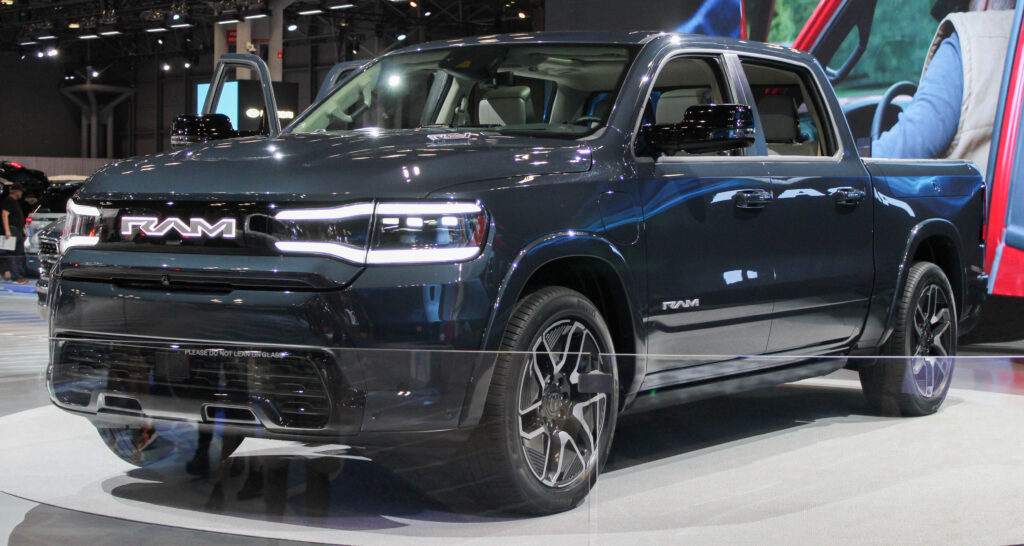
8. **Engineering the Hemi’s Comeback: More Value, More Attitude**The reintroduction of the 5.7-liter Hemi V8 for 2026 was not merely a nostalgic gesture; it was a significant engineering achievement. The Ram engineering team worked diligently to reintegrate the Hemi into the Atlantis electrical architecture, the new backbone for the truck’s systems that debuted in the 2025 Ram 1500. This complex task involved ensuring seamless compatibility for 13 different modules, a testament to the behind-the-scenes work required to resurrect such a popular powerplant.
To expedite the Hemi’s return, Ram opted to reintroduce the engine in its eTorque mild-hybrid configuration, which became standard in 2024. This strategic decision allowed the company to bypass a lengthy re-certification process with government regulators, ensuring the Hemi could hit the market as quickly as possible. Extensive global testing was undertaken, from cold-weather performance evaluations in New Zealand to scorching heat management tests in the American Southwest, alongside recalibrations for ADAS systems, NVH (noise, vibration, harshness), and the hybrid controller for smooth stop/start operation.
Performance-wise, the 2026 5.7-liter Hemi V8 with eTorque continues to deliver robust figures, rated at 395 horsepower and 410 lb-ft of torque, augmented by an additional 130 lb-ft of launch torque from the eTorque system. While the twin-turbo 3.0-liter Hurricane I6 S/O might boast slightly higher peak numbers (420 hp / 469 lb-ft), the Hemi provides a broad, linear torque delivery and that unmistakable classic V8 rumble. For 2026, the Hemi also offers a max towing capacity of 11,340 lbs and a payload of up to 1,910 lbs, proving its capability remains competitive.
What’s even more impressive for Ram loyalists is the enhanced value proposition of the reintroduced Hemi. In many trims, the Hemi is now a more affordable upgrade than before, and in high-end Longhorn and Limited trims, it’s a no-cost option compared to the Hurricane I6 H/O. Furthermore, the Mopar Sport Performance cat-back exhaust, previously an additional $1,700 option, is now standard with the Hemi, delivering a deeper, throatier growl. Coupled with the standard 33-gallon fuel tank, the 2026 Hemi package genuinely offers more for the money, reinforcing its appeal to core truck buyers.
Car Model Information: 2018 RAM 1500 Express
Name: Dodge Ram / Ram pickup
Caption: 2017 Ram 1500 Express
Manufacturer: Dodge
ModelYears: 1981–present
Production: October 1980 – present
Class: Pickup truck#Full-size pickup truck,Pickup truck#Heavy-duty pickup truck
Layout: Front-engine, rear-wheel-drive layout,rear-wheel drive
Predecessor: Dodge D series
Categories: 1990s cars, 2000s cars, 2010s cars, 2020s cars, All-wheel-drive vehicles
Summary: The Ram pickup (marketed as the Dodge Ram until 2010 when Ram Trucks was spun-off from Dodge) is a full-size pickup truck manufactured by Stellantis North America (formerly Chrysler Group LLC and FCA US LLC) and marketed from 2010 onwards under the Ram Trucks brand. The current fifth-generation Ram debuted at the 2018 North American International Auto Show in Detroit, Michigan, in January of that year.
Previously, Ram was part of the Dodge line of light trucks. The Ram name was introduced in October 1980 for model year 1981, when the Dodge D series pickup trucks and B series vans were rebranded, though the company had used a ram’s-head hood ornament on some trucks as early as 1933.
Ram trucks have been named Motor Trend magazine’s Truck of the Year eight times; the second-generation Ram won the award in 1994, the third-generation Ram heavy-duty won the award in 2003, the fourth-generation Ram Heavy Duty won in 2010 and the fourth-generation Ram 1500 won in 2013 and 2014, and the current fifth-generation Ram pickup became the first truck in history to win the award four times, winning in 2019, 2020, 2021 and most recently, 2025.
Get more information about: Ram pickup
Buying a high-performing used car >>>
Brand: Ram Model: 1500
Price: $15,899 Mileage: 114,235 mi.

9. **Ford’s Enduring Commitment: The Coyote V8 and Raptor R**Amidst the industry-wide shift, Ford continues to demonstrate a strong commitment to the V8 engine, particularly within its immensely popular F-150 lineup. While the highly efficient EcoBoost V-6 has made enormous headway and is widely chosen by many customers, the venerable Coyote V8, now a decade old, remains a cornerstone offering. Ford understands the deep-seated preference many truck buyers have for the traditional V8, and as such, it continues to make this powerful engine available, even if it comes at a slight premium over its turbocharged V-6 alternatives.
For most versions of the F-150, buyers can swap in the V8 for free on many trims, although an $800 premium over the EcoBoost is mentioned. This flexibility underscores Ford’s strategy to cater to diverse customer demands, allowing buyers to choose between modern forced induction and classic V8 power. While Ram anticipates about 40% of its buyers to eventually settle on the Hemi, Ford’s F-150 V8 take rate currently hovers around 25%. This difference highlights varying brand loyalties and engine preferences within the half-ton truck segment, yet still represents a substantial volume of V8 sales for Ford.
Beyond the workhorse F-150, Ford continues to push the boundaries of V8 performance with specialized offerings like the Raptor R. This extreme off-road truck doesn’t just offer a V8; it boasts a formidable supercharged engine producing 720 horsepower and 640 lb-ft of torque. In an era where competing high-performance V8 truck options are dwindling, particularly with the discontinuation of the Ram TRX’s supercharged V8, the Ford Raptor R stands as a testament to Ford’s dedication to raw, unadulterated power in a truck. Its existence provides real competition for those seeking the ultimate in V8 truck capability.
Car Model Information: 2014 Ford F-150 XLT
Name: Ford F-Series
Caption: 2022 Ford F-150 Lariat Luxury
Manufacturer: Ford Motor Company
Aka: Ford Lobo (Mexico, 1992–present)
Production: 1948–present
Class: Pickup truck#Full-size pickup truck
Layout: Front-engine, rear-wheel-drive layout,rear-wheel drive
Predecessor: 1941 Ford
Categories: All-wheel-drive vehicles, All Wikipedia articles written in American English, All articles that may contain original research, All articles with unsourced statements, Articles that may contain original research from September 2020
Summary: The Ford F-Series is a series of light-duty trucks marketed and manufactured by the Ford Motor Company since model year 1948 as a range of full-sized pickup trucks — positioned between Ford’s Ranger and Super Duty pickup trucks. Alongside the F-150 (introduced in 1975), the F-Series also includes the Super Duty series (introduced in 1999), which includes the heavier-duty F-250 through F-450 pickups, F-450/F-550 chassis cabs, and F-600/F-650/F-750 Class 6–8 commercial trucks.
Get more information about: Ford F-Series
Buying a high-performing used car >>>
Brand: Ford Model: F-150
Price: $17,745 Mileage: 131,097 mi.

10. **General Motors: A Broad Spectrum of V8 Choices**General Motors, a historical titan in V8 engine production, maintains a comprehensive and varied approach to its V8 offerings in the truck market. Unlike some competitors that are moving exclusively to six-cylinder alternatives, GM provides a diverse powertrain lineup for its trucks, particularly the Chevrolet Silverado 1500. This strategy includes a choice of two distinct V8 engines, alongside diesel and four-cylinder options, catering to a wide array of customer needs and preferences.
This commitment to offering multiple V8 choices differentiates GM in the contemporary truck landscape. While the specific V8 engines for the Silverado 1500 aren’t detailed in the immediate context, the mention of “two V-8s” implies a recognition that different V8 characteristics, perhaps varying in displacement or output, appeal to different segments of the market. This broad availability signals GM’s understanding of the traditional American truck buyer’s preference for V8 power, torque, and the distinctive engine note that comes with it.
The context also alludes to GM’s continued use of V8s in its performance car lineup, such as the Corvette and Camaro, and the Cadillac Blackwing V8. This consistent investment across different vehicle segments suggests a deep-rooted expertise and ongoing development in V8 technology within GM. While the focus here is on trucks, the broader corporate commitment to the V8 underscores a strategic decision to maintain this powertrain option for a significant portion of its loyal customer base, even as the industry navigates the complexities of electrification and efficiency mandates.
Car Model Information: 2024 Nissan Altima 2.5 SV
Name: Chevrolet Silverado/GMC Sierra
Caption: 2022 Silverado 2500HD High Country
Manufacturer: General Motors
Aka: unbulleted list
Production: 1998–present
Assembly: unbulleted list
Class: unbulleted list
BodyStyle: unbulleted list
Layout: unbulleted list
Predecessor: unbulleted list
Categories: 2000s cars, 2010s cars, 2020s cars, All-wheel-drive vehicles, All Wikipedia articles written in American English
Summary: The Chevrolet Silverado is a range of trucks manufactured by General Motors under the Chevrolet brand. Introduced for the 1999 model year, the Silverado is the successor to the long-running Chevrolet C/K model line. Taking its name from the top trim level from the Chevrolet C/K series, the Silverado is offered as a series of full-size pickup trucks, chassis cab trucks, and medium-duty trucks. The fourth generation of the model line was introduced for the 2019 model year.
The Chevrolet Silverado shares mechanical commonality with the identically related GMC Sierra; GMC ended the use of the C/K nomenclature a model generation prior to Chevrolet. In Mexico, high-trim level versions of the Silverado use the Chevrolet Cheyenne name (not to be confused with the 2003 concept). Competing against the Ford F-Series, Ram pickup, Toyota Tundra, and Nissan Titan, the Silverado is among the best-selling vehicles in the United States, having sold over 12 million trucks since its introduction in 1998 as a 1999 model year.
Get more information about: Chevrolet Silverado
Buying a high-performing used car >>>
Brand: Chevrolet Model: Silverado 1500
Price: $19,695 Mileage: 49,175 mi.
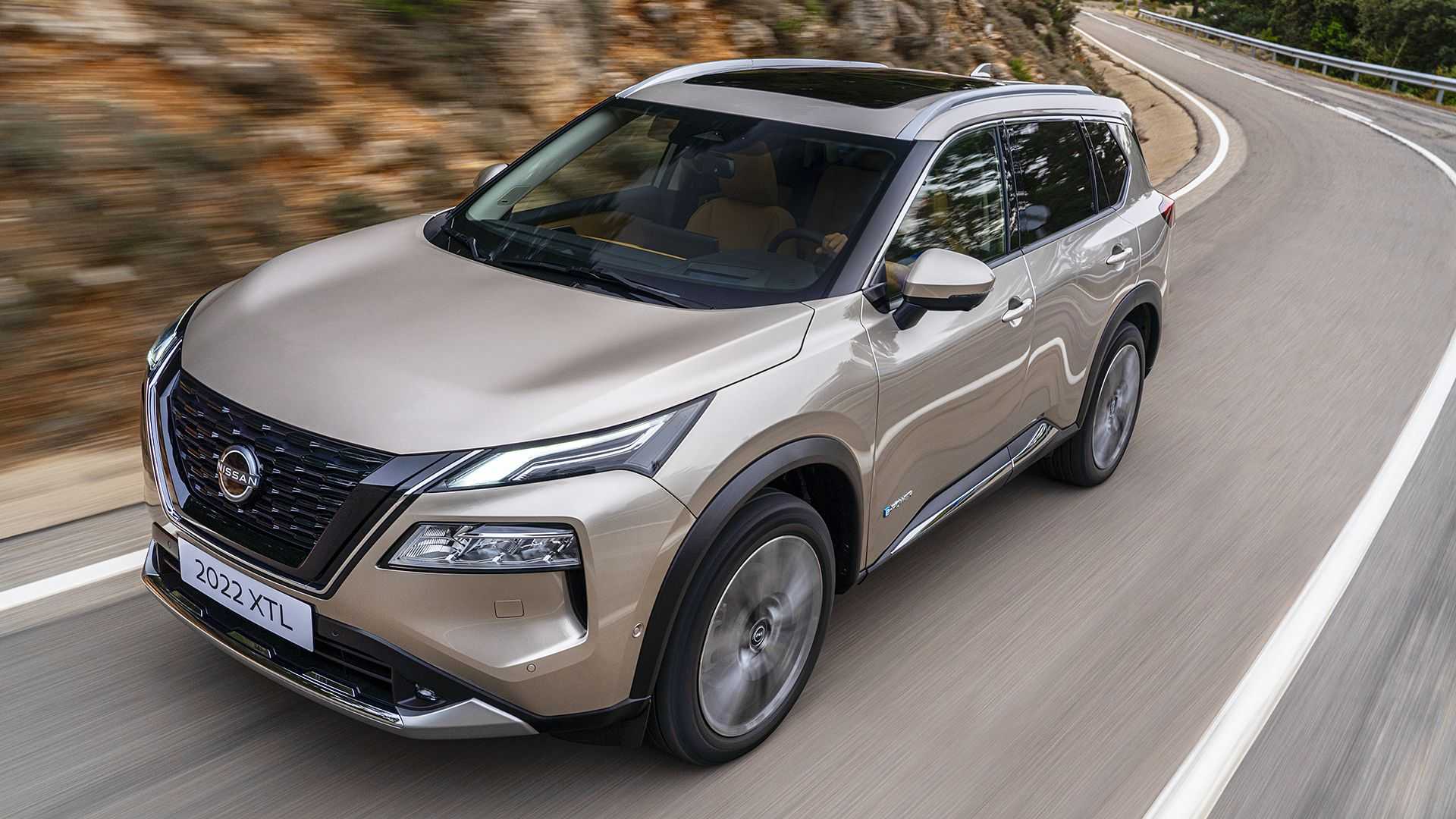
11. **Nissan Titan’s Quiet V8 Presence**In a landscape increasingly dominated by larger manufacturers, Nissan’s Titan pickup truck quietly carries on with its V8 offering, representing another outpost for traditional V8 power. The Titan still offers a carryover 5.6-liter V8 engine, providing a familiar and proven powertrain option for its buyers. This engine has been a staple for the Titan, offering dependable performance and the expected V8 characteristics that a segment of truck owners continue to demand.
However, the impact of Nissan’s V8 offering on the broader truck market is somewhat limited. The context highlights that Nissan only managed to sell 27,000 Titans last year. This relatively modest sales volume, especially when compared to the hundreds of thousands of units sold by the “Detroit Three,” means that while the Titan contributes to the overall availability of V8 trucks, its influence on the prevailing market trends or the overall V8 landscape is not as substantial as its larger competitors.
Despite its smaller market share, the Nissan Titan’s continued inclusion of a V8 engine serves as a reminder that not all manufacturers have completely abandoned the traditional eight-cylinder. For those specific buyers who prioritize a proven V8 in a full-size pickup and might be looking beyond the domestic brands, the Titan remains a viable, albeit less common, choice. Its presence underscores the niche demand that still exists for naturally aspirated V8 power, even as the industry pivots towards more technologically advanced and often smaller displacement turbocharged engines.
Car Model Information: 2018 Nissan Titan SV
Name: Nissan Titan
Manufacturer: Nissan
Production: September 2003 – November 2024
ModelYears: 2004–2024
Assembly: Canton, Mississippi
Class: Pickup_truck#Full-size_pickup_truck
BodyStyle: 2-door pickup truck,4-door pickup truck
Layout: Front-engine, rear-wheel-drive layout
Platform: Nissan F-Alpha
Caption: 2021 Nissan Titan Crew Cab PRO-4X (Canada)
Categories: 2010s cars, 2020s cars, All-wheel-drive vehicles, All articles with unsourced statements, Articles with short description
Summary: The Nissan Titan was a full-size pickup truck manufactured in the United States for the North American market by Nissan, produced for the 2004–2024 model years.
Get more information about: Nissan Titan
Buying a high-performing used car >>>
Brand: Nissan Model: Titan
Price: $21,685 Mileage: 89,835 mi.

12. **The Ascendancy of Turbocharged V6 and Inline-Six Engines**While the V8 holds an undeniable place in automotive heritage and continues to serve a dedicated fanbase, the contemporary truck market is increasingly showcasing the ascendancy of advanced turbocharged V6 and inline-six engines. These modern powertrains are proving themselves not just as viable alternatives, but often as superior options in key performance metrics, thereby reshaping consumer expectations and influencing manufacturers’ strategies. The shift from Toyota’s 5.7L V8 to its twin-turbo 3.4L V6, particularly the hybrid MAX version, serves as a prime example of this trend.
Toyota’s new V6, with its hybrid MAX option, delivers a remarkable 437 horsepower and an astonishing 583 lb-ft of torque at just 2400 rpm, significantly surpassing the outgoing V8’s 381 hp and 401 lb-ft. This power increase, combined with a lighter engine package, directly translates to enhanced utility, allowing the 2024 Tundra to boast maximum payload and towing capacities of 1,940 pounds and 12,000 pounds, respectively, compared to the 2021 V8 Tundra’s 1,730 pounds and 10,200 pounds. These compelling numbers illustrate how modern six-cylinder engines can offer more power and capability than their V8 predecessors.
Stellantis’s new twin-turbocharged inline-six Hurricane engine further exemplifies this shift. Available in both Standard Output (420 hp, 469 lb-ft of torque) and High Output (540 hp, 521 lb-ft of torque) variants, these engines are designed to be undeniably potent and technologically advanced, replacing older V8 options in the Ram 1500. Ed Kim, President and chief analyst at AutoPacific, commented on the Hurricane, stating, “It’s a very nice engine. It’s very refined. It’s very smooth. On paper it’s better in every way — well, better in many ways.” This feedback reinforces that these new-age six-cylinders are not just about raw numbers but also about delivering a refined and capable driving experience.
Beyond raw power and capability, the fuel economy improvements from these turbocharged six-cylinder engines are substantial. The V6-hybrid MAX Tundra achieves a combined 22 mpg, a significant upgrade over the V8 Tundra’s 15-mpg combined rating. These advancements allow automakers to meet increasingly stringent emissions standards while simultaneously offering customers impressive performance and lower running costs. The widespread adoption and success of these engines across various brands solidify their position as formidable replacements for traditional V8s, driving the industry towards a new era of powertrain efficiency and performance.

13. **The Uncertain Future: V8s as Specialty Equipment and Last Holdouts**The ongoing narrative surrounding V8 engines in trucks points towards an increasingly specialized role rather than a broad, mainstream presence. The “Peak V8” era, where these engines were “household appliances,” is clearly behind us. Today, V8s are transitioning into what the industry describes as “specialty equipment,” reserved for specific performance-oriented models, heavy-duty applications, or as premium options for a dedicated clientele who value their unique characteristics beyond mere horsepower figures.
The persistent pressures of tightening emissions requirements and the accelerating push towards electrification are the primary drivers of this evolving landscape. While V8s have managed to survive for five decades against such predictions, the current technological pivot appears more definitive. Manufacturers are compelled to invest heavily in smaller, more efficient turbocharged engines and entirely electric powertrains, which inevitably reduces the development resources and market space for large-displacement V8s.
As the number of V8 options dwindles, the question of “who will be the last holdout” becomes increasingly relevant. The context suggests that full-size trucks and SUVs have been the “last bastions” for the V8. However, even within this segment, many brands are actively developing six-cylinder and even four-cylinder engines that deliver power exceeding older V8s. While the Ford F-150 and Chevrolet Silverado 1500 still offer V8s, the overall trend is undeniable.
Looking beyond trucks, the Chevrolet Corvette, particularly the Z06 with its breathtaking performance figures, is explicitly mentioned as a strong contender to be the last car—sedan, coupe, or convertible—to move on from a V8. With its long-standing synonymous association with V8 power since 1956 and healthy premium sales, Chevrolet can afford to maintain the V8 in the Corvette for quite some time, making it a symbolic torchbearer for the V8’s enduring legacy in an increasingly electric future. The V8’s days may indeed be numbered as a common offering, but its legacy of power, sound, and a unique driving experience will undoubtedly continue to resonate with enthusiasts, even as the automotive world embraces new frontiers of performance and efficiency.


